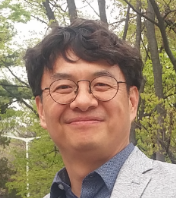Day 1 :
Keynote Forum
Thomas Böldicke
Helmholtz Centre for Infection Research, Germany
Keynote: Therapeutic potential of intrabodies in cancer therapy
Time : 10:30-11:10

Biography:
Abstract:
Keynote Forum
Andreas Weinhaeusel
Austrian Institute of Technology GmbH, Austria
Keynote: Immunomics technologies using protein and peptide microarrays – for antibody profi ling
Time : 11:30-12:10

Biography:
Abstract:
- Allergy and Therapies|Innate Immune Responses|Cellular Immunology|Infectious Diseases and Immune System
Location: Olimpica 3+4

Chair
Thomas Böldicke
Helmholtz Centre for Infection Research, Germany
Session Introduction
Erik Wambre
Benaroya Research Institute, USA
Title: Biomarkers of T cell responses in allergic diseases
Time : 12:10-12:40

Biography:
Abstract:
Loredana Frasca
Istituto Superiore di Sanità (ISS), Italy
Title: NET-released LL37 is a new SLE autoantigen for T-helper cells involved in autoantibody production
Time : 12:40-13:10

Biography:
Abstract:
Ena Ray Banerjee
University of Calcutta, India
Title: Cell based regenerative therapy in lung fi brosis
Time : 14:00-14:30

Biography:
Abstract:
Fa-Ping Wang
Sichuan University, China
Title: Dupilumab treatment in moderate-to-severe atopic dermatitis: A systematic review and meta-analysis
Time : 14:30-15:00

Biography:
Fa-Ping Wang is a Doctoral student in West China School of Medicine, Sichuan University. She has published more than 10 papers and has joined several programs.
Abstract:
Tjie Kok
University of Groningen, Netherlands
Title: High yield production of CD74 constructs fused to solubility-enhancing peptides and characterization of their MIF-binding capacities
Time : 15:00-15:30

Biography:
Abstract:
Wen Qiu
Nanjing Medical University, China
Title: Sublytic C5b-9 induces glomerular mesangial cell apoptosis through the cascade pathway of MEKK2-p38 MAPK-IRF-1-TRADD-Caspase 8 in rat Thy-1 nephritis
Time : 15:50-16:20

Biography:
Abstract:
Luca Fania
Istituto Dermopatico dell’Immacolata-IRCCS, Italy
Title: Detection and characterization of Igg, Ige and Iga autoantibodies in bullous pemphigoid associated with dipeptidyl peptidase-iv inhibitors
Time : 16:20-16:50

Biography:
Luca Fania has his expertise in dermatological inflammatory and bullous diseases. He works at Istituto Dermopatico dell’Immacolata-IRCCS in Rome, which is an Italian referral center in bullous disease. In the last years, he is focusing on the study of drug-induced pemphigoid and mainly due to dipeptidyl peptidase-IV inhibitors.
Abstract:
Bullous pemphigoid (BP) is a rare autoimmune subepidermal blistering disease characterized mainly by autoantibodies against two hemidesmosomal proteins named BP180 and BP2301,2. Recently have been reported that dipeptidyl peptidase (DPP)-IV inhibitors, utilized in type 2 diabetes mellitus, could be involved in the etiopathogenesis of the disease3-5. We report cases of BP associated to DPP-IV inhibitors characterizing the clinical phenotype and the antibodies against the two hemidesmosomal proteins. We typified IgG, IgE and IgA reactivity against specific domains of BP180 and BP230 by ELISA and Western Blot. Unlike previous reports3, all our patients showed an inflammatory phenotype that clinically presented with erythema, urticarial lesions, and bullae. The epitope mapping showed that IgG reacted with multiple epitopes that spread over the BP180 antigen, in addition to NC16A. IgE reacted more against BP230 than against BP180. Conclusions: The IgG response appears to be important in the pathogenesis of these BP patients, while IgE reactivity seems to be a secondary event.
- Antibody Engineering|Cancer Immunology |Clinical Immunology|Innate Immunity
Location: Olimpica 3+4

Chair
Thomas Böldicke
Helmholtz Centre for Infection Research, Germany

Co-Chair
Ena Ray Banerjee
University of Calcutta, India
Session Introduction
Yong-Sung Kim
Ajou University, South Korea
Title: Cytosol-penetrating antibody technology for targeting intracellular oncogenic Ras mutants
Time : 11:40-12:10

Biography:
Abstract:
Hongtao Zhang
Perelman School of Medicine- University of Pennsylvania, USA
Title: Developing the next generation of antibody-like therapeutic proteins with immune functions for cancer
Time : 12:10-12:40

Biography:
Abstract:
Isaac Melamed
IMMUNOe Health Centers, USA
Title: The innate immunity- A new player
Time : 12:40-13:10

Biography:
Abstract:
Ulrich Rothbauer
University of Tübingen, Germany
Title: Nano- and chromobodies: How to connect biochemistry and cell biology
Time : 14:00-14:30

Biography:
Abstract:
Loredana Frasca
Istituto Superiore di Sanita, Italy
Title: Anti-carbamylated and anti-citrullinated LL37 antibodies are present in psoriatic arthritis (PsA) patients and are potential markers of disease together with GM-CSF and IFN-α
Time : 14:30-15:00













